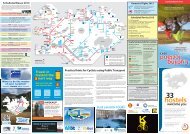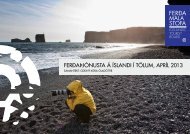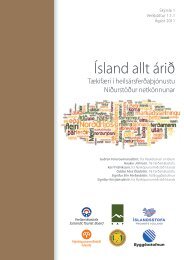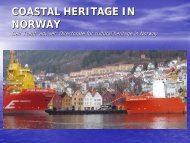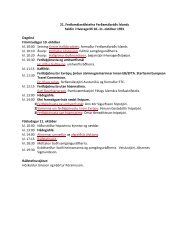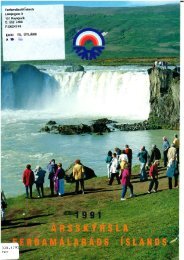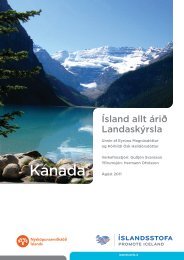Untitled
Untitled
Untitled
You also want an ePaper? Increase the reach of your titles
YUMPU automatically turns print PDFs into web optimized ePapers that Google loves.
Our argument is that it is important in tourism theory to explicitly<br />
interpret and explain tourism also as an innately geographical phenomenon<br />
that takes place on the Earth. This is not a novel idea. It may readily be<br />
found in many traditional accounts of tourism, and not only those of<br />
tourism geography. It is obvious too that the core of tourism since the<br />
founding days of tourism studies has been thought of in terms of travelling<br />
and going somewhere else, for example; “[t]o be there oneself is what is<br />
crucial in most tourism” (Urry 1990/2002, p. 154).<br />
It may further be noted that paying heed to the geographical nature<br />
of tourism also means to keep a critical eye on its spatial underpinnings.<br />
For example, tourism has in tourism theory often been captured by a<br />
spatial imagery that assumes a clear distinction between home and away.<br />
The universality of this spatial imagination of tourism has recently been<br />
questioned and critiqued as we have alluded to in the above.<br />
Tourism imaginationings as geographical patterning<br />
Human life on the Earth has always involved geographical movements<br />
between different locations and environments, be it for survival reasons,<br />
for the purpose of work, exploration, curiosity, adventure, or whatever else<br />
possible human motives there might be. However, prior to the advent of<br />
modern mass tourism there were no touring masses on the road travelling<br />
on return tickets for leisure purposes from the origin of home to the away<br />
of tourist destinations.<br />
In other words, humans were geographical animals long before they<br />
became those touring animals we refer to as “tourists”. Geographical<br />
imaginationings, like information and communication about other places<br />
and people so central for modern tourism, have also existed as long as<br />
humans themselves. Before modern tourism people like adventurers and<br />
explorers also wrote about their various experiences and understandings.<br />
They then contributed to the development of modern forms of collective<br />
geographical imaginationings which later were to become part of tourism<br />
imaginationings. In a publication from 1852 one could, for example, read<br />
about Iceland in the following way:<br />
This is the island that is shown to us in our geographical books and<br />
maps, as a small white spot on the borders of the Arctic ocean, and<br />
described as a cold, dreary, and uninteresting region, inhabited by a few<br />
dwarfish and ignorant people, who have little knowledge of the world<br />
and whom little is known (Miles 1852, in Boucher 1989, p. 17).<br />
42



